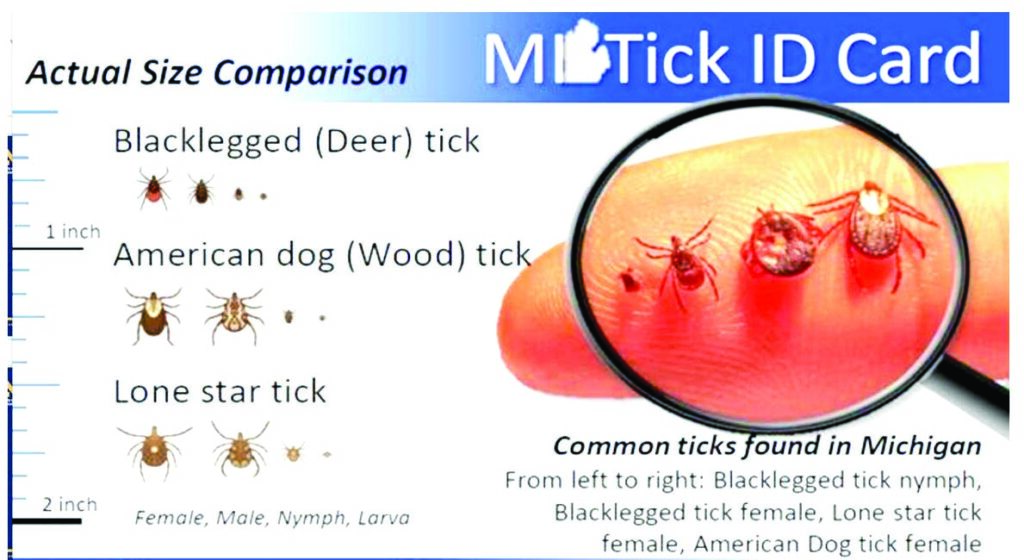
By Don Rush
For the last few weeks readers have reported discovering ticks on themselves and their pets and asked if “tick season” started early.
According to Chelsea Wuth, Associate Public Information Officer with the Michigan Department of Health and Human Services, “Ticks can be found throughout Michigan every year. This means we can expect people and animals to encounter them when outdoor temperatures are at least 40°F.”
She said the Blacklegged tick (or deer tick) is well-established in parts of Michigan’s Upper and Lower Peninsulas and has been expanding its range over the years. The Deer tick is the carrier of Lyme Disease. The American Dog tick is the species most commonly encountered by people and animals in Michigan. She also said the Lone Star tick, though rare in Michigan, is “becoming more common, especially in the southwestern Lower Peninsula.”
According to the Oakland County Health Department, ticks are arachnids, like scorpions, spiders, and mites. As adults, they have four pairs of legs and no antennae. Ticks must feed on the blood of host animals in order to survive. Ticks can feed on mammals, birds, reptiles, and amphibians. Many tick species prefer to have a different host animal at each stage of their life cycle (larva, nymph, and adult). Ticks are among the most efficient carriers of disease because they attach firmly when feeding and can take several days to complete a feeding, often going unnoticed due to their very small size (nymphs can be the size of a poppy seed).
Ticks live in grassy, brushy, or wooded areas, your back yard or even on animals. Spending time outside walking your dog, camping, hiking, gardening, or hunting could bring you in close contact with ticks.
Wuth said to walk in the center of trails to avoid contact with overgrown grass, brush and leaf litter at trail edges. She said to always check for ticks on yourself and your animals after being outdoors. When coming in from the outdoors, she said to bathe or shower as soon as possible after coming indoors (preferably within two hours) to wash off and more easily find ticks that might be crawling on or attached to you.
According to the Oakland County Health Department the areas to check on your body includes: Under the arms; in and around the ears; inside belly button; back of the knees; in and around the hair; between the legs; and around the waist.

Ticks can be as small as a black pepper flake to as large as a watermelon seed. Inspect all body surfaces carefully and promptly remove attached ticks with tweezers. To remove a tick, grasp the tick firmly and as closely to the skin as possible. With a steady motion, pull the tick’s body away from the skin. Cleanse the area with an antiseptic.
If you’re going into the great outdoors, treat clothes (especially pants, socks and shoes) with permethrin, which kills ticks on contact or buy clothes that are pre-treated. “Do not use permethrin directly on skin,” she said.
Check your clothing, gear, and pets for ticks. Ticks can ride into the home on clothing and pets, then attach to a person later, so carefully examine pets, coats, and day-packs. Any ticks that are found should be removed. Wash clothes in hot water and dry on high heat to kill ticks in clothing.
Both the county health department and Wuth said to consult with your veterinarian about tick-prevention products which are suitable for your pet.
And, Wuth’s best piece of advice for people and their pets? “Avoid tick-infested areas.”

Leave a Reply